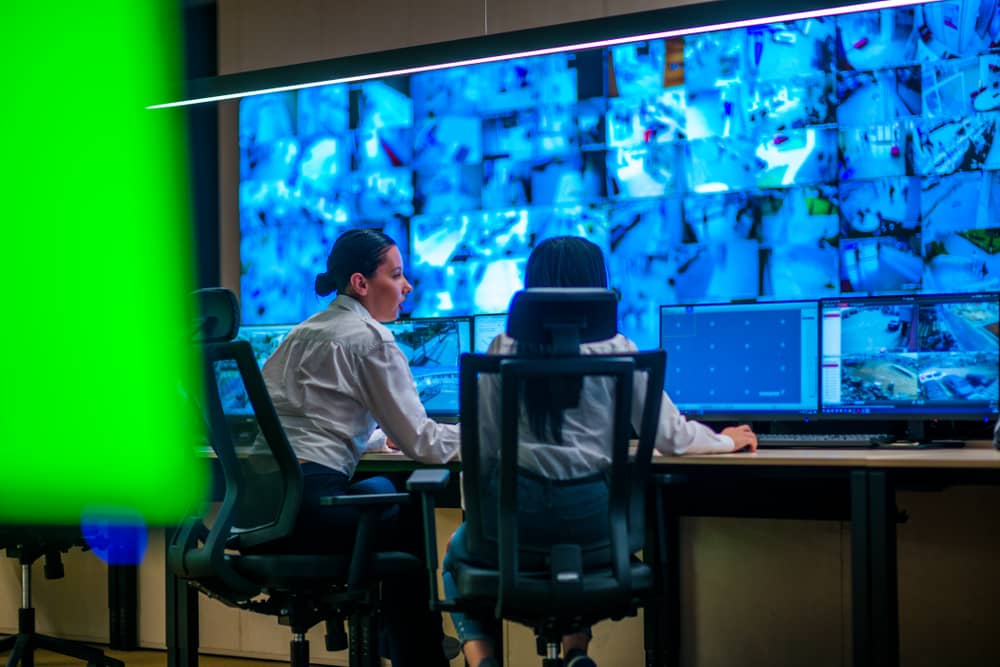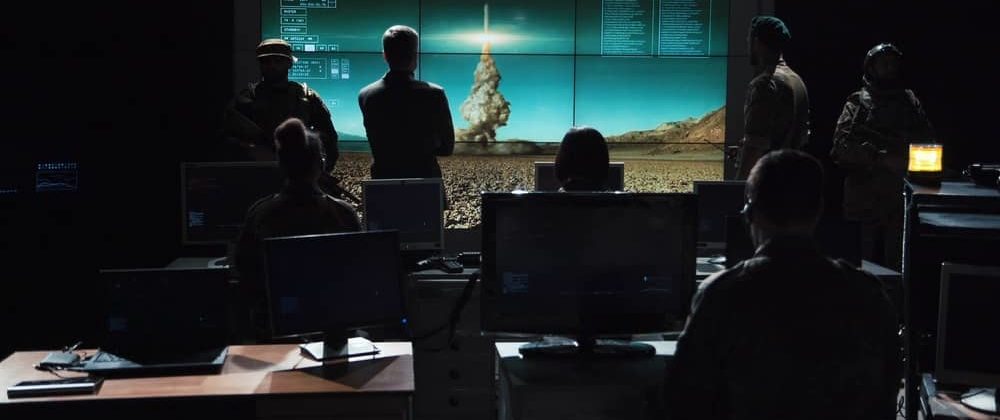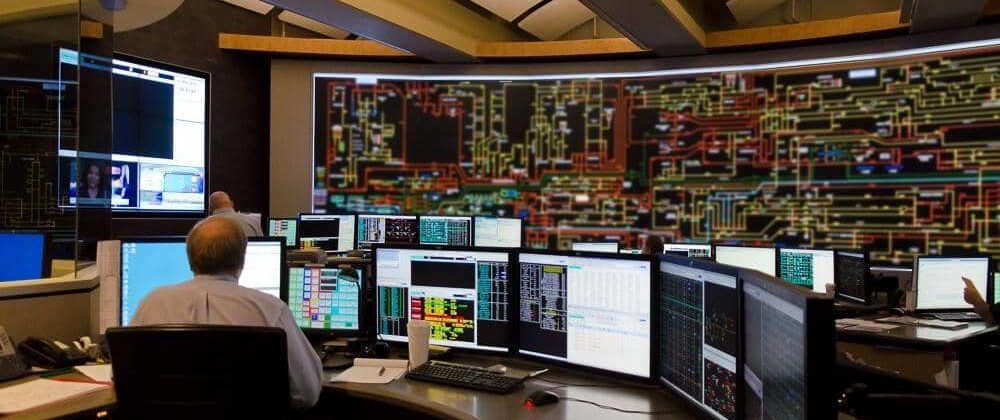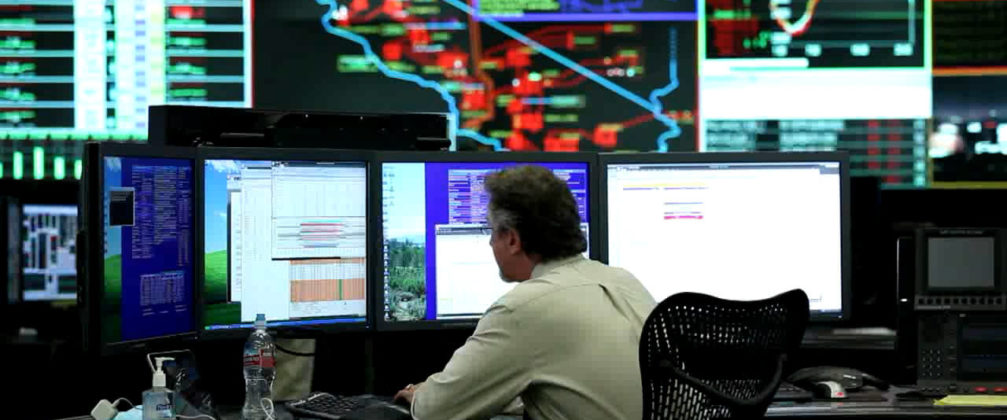If you’re in the market for a control room video wall system, you know there are a lot of options to choose from. This means it can be difficult to fully comprehend each system and whether or not it will meet all of your needs. In this blog, we’ll examine each of your choices, including how they work and the advantages and disadvantages of each configuration.
Why Control Room Video Wall Systems Matter
When it comes to mission-critical command center environments, few elements are as important as control room video wall systems. Versatile, high-resolution video wall installations help control room operators and essential personnel maintain the highest levels of situational awareness. They also facilitate organization-wide collaboration, efficient big data monitoring, and the ability to make informed decisions in real time.
It’s important to understand that different industries have unique display and hardware requirements. Each organization has to display different types of content, and their control room video wall design must be able to meet those requirements. However, there are several universal standards for data center video wall systems, which we’ll review below.
Must-Haves for Control Room Video Wall Systems
Regardless of your organization or industry, your command center video wall must be:
- Flexible to support and integrate with a variety of content sources. These include SCADA, traffic cameras, weather forecasts, manufacturing data, security cameras, and much more.
- Scalable to grow alongside your organization’s needs. Whether you’re adding input sources or replacing old screens, your video wall setup must be conveniently scalable.
- Reliable for 24/7 environments that require continuous monitoring. Video walls must have redundant, fail-safe power supplies that ensure operations around the clock. It’s important to note that not all display manufacturers offer products with redundant power supplies. Redundancy is sometimes provided through a back-up generator or an automatic switch to a different circuit.
- Equipped with high-resolution displays that maximize data interpretation. Access to clear, well-organized data at a glance helps operators make the best decisions possible.
- Designed and built to the highest quality standards for an extended lifespan. Selecting a video wall system with a long lifecycle helps optimize your cost of ownership.

LED Video Wall Systems
Also known as direct-view LED, LED (light-emitting diode) screens contain semiconductors that emit light as a current passes through them. These currents (or energy bands) are composed of particles known as electrons and holes. The gap between each band determines the energy of each photon (or light particle) the screen emits. This photon energy dictates the wavelength (or color) of the emitted light.
Advantages of LED Video Walls
There are many benefits of selecting LEDs for your data center video wall system:
- High pixel density
- Seamless/bezel-less visualization
- Most convenient serviceability
- Extremely high brightness levels
- Long lifespan similar to LCDs
Disadvantages of LED Video Walls
Here are a few disadvantages of LED systems to keep in mind before making a purchase:
- Highest initial investment
- Lower resolution than LCD and rear-projection options
LCD Video Wall Systems
Unlike LEDs (which emit light), LCD (liquid crystal display) screens use a backlight to produce an image. This backlight can be a traditional fluorescent bulb or an LED light. LCDs use liquid crystals to rotate polarized light between two glass filters as pixels are switched on and off electronically. Because the light is polarized, only half of it shines through to the liquid crystal layer.
Modern LCD screens operate using an active matrix display grid, also referred to as a thin film transistor (TFT) display. LCD screens have a grid of conductors with pixels at each intersection in the grid. Active matrix models use TFTs with capacitors that allow individual pixels to retain their charge. Because there is a transistor at each pixel intersection, less current is required to maintain each pixel’s luminance. This allows the current to be switched on and off more often, improving screen refresh time.
Passive matrix display grid LCDs are available (and were more common in the past), but active models are typically preferable in high-intensity control room environments.
Advantages of LCD Video Walls
Here are a few of the most important advantages of LCD screens for command centers:
- High pixel density, resolution, and brightness
- Lowest initial investment
- Uses less power than LED displays
- Reliable, solid-state construction
- Low cost of ownership due to minimal maintenance
Disadvantages of LCD Video Walls
While there are many benefits of LCD video walls, there are a few disadvantages to account for:
- Visible bezels (seams) between individual panels
- Image retention when a static image is displayed for an extended period
- Some light may shine through liquid crystals to screen
- Shorter lifespan than some other options

DLP Front-Projection Video Wall Systems
DLP (digital light processing) front-projection systems use digital micromirrors to reflect light towards (“on” pixel) or away from (“off” pixel) a screen. These micromirrors work together with a spinning color wheel to create sequential color patterns that generate each projected image. Some high-end DLP models have three individual DLP chips for red, green, and blue (RGB).
Advantages of DLP Front-Projection Video Walls
There are many benefits of purchasing DLP video wall installations, including:
- Non-liquid components allow for greater screen sizes
- Wide color spectrum range and grayscale linearity
- No visible bezel lines
- Less expensive upfront and more cost-effective over time
- Practically maintenance-free
Disadvantages of DLP Front-Projection Video Walls
Here are a few disadvantages of DLP systems to consider before making a decision:
- Potential rainbow effect based on number of projector segments
- More moving parts than non-projector options
- Lower color saturation levels for poorer reds and yellows
- Greater number of lumens in rooms with high ambient light
Rear-Projection Video Wall Systems
Rear-projection video wall systems (also known as cubes) shine light onto a mirror inside a sealed cube, which is then reflected onto a display screen. Because the cube is fully enclosed, the effects of ambient light are minimized, improving display brightness and contrast. Cubes can be arranged in flat, curved, and non-rectangular setups and are often built into recessed spaces as tiled arrays.
Advantages of Rear-Projection Video Walls
Here are a few of the most significant advantages of selecting rear-projection systems:
- Virtually seamless, but still easily scalable
- Large cubes available to create huge walls
- Longer lifespan than some other options
- Extremely reliable for 24/7 operations
- High pixel density and no image burn-in
Disadvantages of Rear-Projection Video Walls
While there are many benefits of rear-projection systems, here are a few cons to remember:
- Higher initial investment
- Limited viewing angles compared to some other systems
- Visible (albeit tiny) bezels
- Largest footprint due to cube depth

Blended Projection Video Wall Systems
Blended projection systems combine multiple projectors to create larger, higher-resolution images than a single projector. They work by overlapping multiple images and crossfading their edges gradually to produce a single, crisp image. Blended projection systems are available for both front- and rear-projection configurations and compatible with screens of nearly any size or shape.
Advantages of Blended Projection Video Walls
There are several advantages of choosing a blended projection system, including:
- Seamless projection that’s perfect for simulations
- Extremely large, high-resolution display surfaces
- Produce images on flat, curved, angular, or spherical surfaces
Disadvantages of Blended Projection Video Walls
Here are a few negatives to keep in mind as you consider blended projection options:
- Ambient light levels can impact brightness and contrast
- Large footprint required for rear-projection blended systems
- Not as easily scalable as tiled systems like LCD, LED, or cubes
Choose a Network-Engineered Content Management System
Control room video wall systems can’t function to their highest potential without a reliable content management system like Mauell’s Xomnium. Xomnium allows your personnel to display, control, stream, view, and share each piece of data that enters your control room in real time. It’s IP-based and uses standard network technology to seamlessly scale up or down with your organization.


